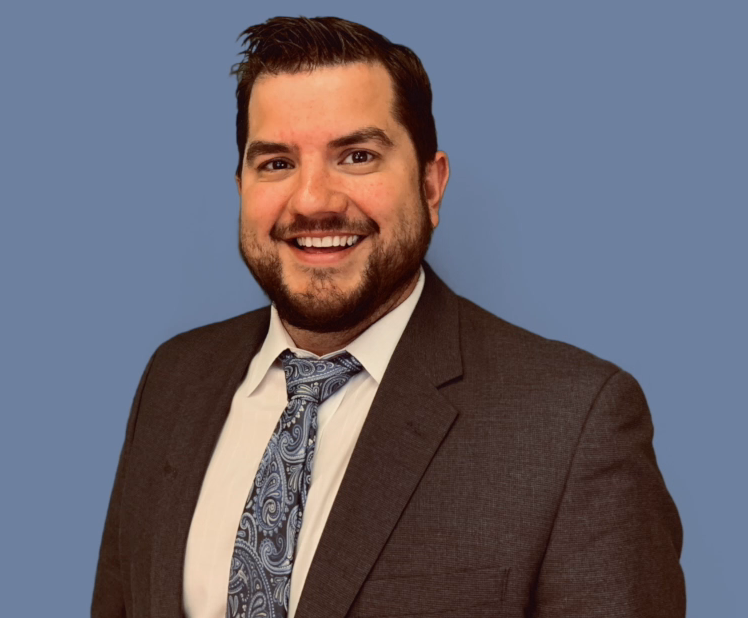Marc Lopez
The right to a fair trial in Indiana is absolutely important, and I am so proud that my good friend and associate here at the Marc Lopez Law Firm was co-counsel on a recent Indiana Supreme Court case where the court ordered a new trial—which is so rare for the Indiana Supreme Court.
I’m absolutely blown away, and I’m so proud of the Indiana Supreme Court and their holding on this, because a trial by jury is truly the most important thing protecting the average person from government tyranny.
So I have Jamison Allen with me to talk about this Supreme Court case. Jamison, welcome.
Jamison Allen
Thank you.
Marc Lopez
Jamison, you were co-counsel at the Court of Appeals stage and at the Supreme Court stage, am I correct?
Jamison Allen
That’s correct.
Marc Lopez
So give us a brief rundown of the facts, man. How did you get from trial to the Court of Appeals, to the Indiana Supreme Court? Give us the procedural posture of the case.
Jamison Allen
Contrary to what a lot of people think, there aren’t very many cases that make it that far. But what happened at trial—unfortunately, we had a client who lost her life after a surgery. We had to sue a doctor, and the matter ended up at trial.
At trial we have what’s called voir dire or jury selection—where you determine who’s going to be on the jury—and at this time, attorneys get to ask questions to see who these people are, what their views are, and see if they’d be a good juror on the case.
And there was a juror who expressed a lot of discomfort and refusal to consider money damages, which is the exact thing that the law says the plaintiff has a right to pursue and try to prove.
Marc Lopez
When you say they have the right to pursue that—there’s nothing else to pursue, am I right? You can’t bring someone back from the dead. You can’t go back and get a bag full of diamonds, I mean, money is the only thing—
Jamison Allen
Right, that’s an excellent point, and there are some cases where you can get a court order to stop a city from doing something to your house, but in this type of case—you’re right, there is only an issue of damages. So compensation is the only thing the law permits.
For that reason, we believed that this juror was not appropriate for this case and that the court should have removed this juror for cause, which is where the court makes a decision that—as a matter of law—this juror should not sit on this jury.
Marc Lopez
I’m gonna press pause right there. So, jury selection—you’re picking a jury, and you’re trying to find a jury that’s not going to be biased against your client. And then the opposing party is trying to pick a jury that’s not biased against their client.
Jamison Allen
Absolutely.
Marc Lopez
Explain to the listening audience—what mechanisms are available to aid you in finding an unbiased jury?
Jamison Allen
Well, you get to ask all types of questions, and when you discover that a juror is biased, what you have to do is approach the bench for a sidebar where the attorneys and the judge quietly discuss the facts and the reasons why you think this juror is unfair. And so the court then has the responsibility—under this case that was decided a couple of weeks ago—to remove that juror if we’ve established that that juror is in fact biased.
If the court disagrees with the attorney and doesn’t think the bias rises to the level of striking that juror for cause, then all attorneys have what are called peremptory challenges. These challenges can basically be used at the discretion of the party to remove three jurors who—for whatever reason—you don’t think will be fair to your client.
There are some limitations, of course. You can’t strike someone on the basis of their race, or anything like that. But generally, you can use the peremptory challenge to take someone off the jury without cause.
So in this situation, we were forced to use one of those peremptory strikes to remove this juror, who we believed was inappropriate for this type of case. This essentially reduced our available strikes from three to two, because we believed that juror should have been removed for cause.
Marc Lopez
Hold on, one second. Anybody listening to this—if you do primarily criminal law, you’re going to be like, What are you talking about? Three strikes? In civil cases, you get three peremptories. It’s crazy.
For misdemeanors and low level felonies, you get five peremptories. Level 5 or higher, you get 10, and then where the State is seeking the death penalty or life without parole, you get 20 peremptory challenges.
So, anybody listening to this who’s done a criminal trial and thought, I wish I had more strikes— can you imagine working with only three? I mean, that blows me away, and the idea that a judge would not kick someone off for cause when they’re giving them reasons—I know being a judge is hard, so I’m not criticizing, but when you only have three, it seems like you’d err on the side of caution.
Jamison Allen
That’s one of the arguments in favor of interpreting the rules that way—if someone gets on the jury, it’s going to taint the result if they’re not appropriate for that jury. Probably the toughest decision that any trial attorney ever makes is who are those strikes going to be—in particular, who is strike number three. And there are a lot of arguments—quiet arguments—at the counsel table at trial where attorneys disagree on that.
But yeah—you only get three, and in this situation, because the other side had three peremptories, and we had to use one for a juror who should have been removed for cause, we argued to the Court of Appeals that we should get a new trial. The other side had their three strikes, but we only had two. In baseball, both sides have three outs, and both sides get three strikes, and that was essentially the basis for the appeal.
Marc Lopez
Jamison, you’re way smarter than me. So let’s break it down for anybody else that’s at my level here.
You have three peremptory strikes, but there are unlimited strikes for cause. So you have this juror who’s giving biased responses, and you say to the judge, We’d like to strike this juror for cause. But the judge says no, so you have to use one of your three peremptories to strike the juror.
Jamison Allen
Correct.
Marc Lopez
And then you’re down to two.
Jamison Allen
And here’s the mechanism to get there: Once the judge denies your for cause strike, in order to preserve your right to appeal, you have to use all your peremptories. You’re not required to use peremptory strikes in jury selection. You can take the first six jurors in line.
But if you don’t use all your peremptories, then you’re not going to have an appeal on the jury selection issue, because you could have used a peremptory strike to make up for the for cause denial, right? So that’s one of the requirements.
But before that, you have to make sure that the trial record is preserved properly and that the juror’s bias is sufficiently communicated in that record. There’s an entire art form on how to do that—what’s called box in the juror—where you confirm what those views are and how biased they are.
The reasons why we do that, is one, for appeal, but also to prevent the other side from arguing that the juror’s views haven’t been made clear. Once the juror is committed to those views—to those biases—and no one’s able to rehabilitate the juror, where you go back in and clarify, Well, you said XYZ, but you don’t really believe that in this situation, do you?
If it looks like the other side is going to strike a juror for cause, and you don’t think they should be allowed to, you can ask those types of questions—basically, showing that the bias isn’t as extreme as it first appeared. If that’s the case, then the trial judge can say, Well, there’s not sufficient bias to justify cause to remove the juror.
So we did both of those things and I have to give credit to Rich Cook, who was lead counsel at trial for doing an excellent job on that. Once that occurred, and we used all the peremptories, and there was a juror who ended up on the jury who shouldn’t have—then you have a right to appeal. And that’s what we argued to the Indiana Court of Appeals.
The Court of Appeals unanimously decided that it was a mistake, and that the only right thing to do for justice was to try the case again and start over with the new jury selection. After that, every party after a court of appeals decision has the right to ask the Indiana Supreme Court to take a look at it.
It’s called granting transfer, and the Indiana Supreme Court can grant transfer and say, Yes, we’re going to take this case, because there’s something we might treat differently than the Court of Appeals.” Or the Court can say, No, we’re denying it, and then the Court of Appeals decision stands. So the Indiana Supreme Court took it, and then this spring, we had the oral arguments.
Marc Lopez
Now hold on a second! This case was orally argued to the Supreme Court on Zoom—am I right about that?
Jamison Allen
It was the very first time that the Indiana Supreme Court had remote oral arguments, so it was history-making. The work of justice doesn’t stop, and credit to the Indiana Supreme Court for working out the logistics to make that happen.
Marc Lopez
I particularly enjoyed their virtual backgrounds, as if they were in the courtroom. I thought that was pretty clever. I’m smiling because I was watching the oral argument when it was happening, and anything involving a fair trial just piques my interest because, you know—you spend thousands of hours a year doing trial prep, practicing trial skills, and working on trials with other attorneys, so it’s naturally something that I’m passionate about.
You talked about rehabilitation of witnesses—this drives me crazy, because I do a lot of criminal juries, and oftentimes in the jury pool, people will start crying. I can’t do this or I can’t judge another person or I believe in God above, only He can judge. I’ve had jurors bawling, and I hand them tissues and say, Judge, I would like to strike them for cause.
And the prosecutor gets up and rehabilitates them! I know you feel that way, but if the judge tells you to be fair and impartial, will you listen to the judge? And once the juror agrees to listen to the judge—for cause denied!
Jamison Allen
Selecting a jury is arguably the most important part of a case, and it’s the part of the trial that is most likely to determine the result. So we believe that this decision is good—not just for plaintiffs—it’s good for everyone, because the same rules will apply if someone has what are seen as anti-defendant biases.
If there’s a case against an insurance company, and someone really dislikes insurance companies and thinks that they undervalue claims and charge too much in premiums, et cetera, et cetera, well, that person should not be on the jury, and the judge in that case should remove them. That’s what our case stands for.
The Supreme Court confirmed the duties of the trial court and the duties that attorneys have as officers of the court to make sure this procedure is followed, and that when people have been waiting years—years!—to get their day in court, they actually have as fair a jury trial as we can give them.
Marc Lopez
So the Supreme Court ultimately said, the trial court should have struck that juror for cause, thereby saving your client a peremptory, which you guys could have used on the jury you actually got? Am I right about that?
Jamison Allen
Yes, because the peremptory strike we had to use for this juror would have still been in our pocket, and we would have used that strike for someone who ultimately ended up on the jury. The purpose of a peremptory, in part, is to rely upon the expertise and professional skill of the attorneys to ensure a fair trial.
What I mean by that is, on record—what the court reporter types up, what the judge says at trial, what the jurors and the witnesses say, what attorneys say—in the written record, a juror could say, Oh, sure, I can be fair to that insurance company—and if that’s all that’s written, that’s what the court would read: Well, this person says they’re going to be fair. But in person, it could have been sarcastic: Oh, sure, I’ll be fair to that insurance company. Different tone gives a much different feel, right?
So if I’m the insurance company attorney, I’m thinking, Okay, I’m taking that person off, because I can’t get a strike for cause unless they say something more. There are little cues like that that you see at trial, where you realize, Oh, this person is not going to be fair. And the for cause rules won’t take that person off unless they answer other questions in certain ways.
So that’s why they’re so important. The plaintiffs really want to have compensation and defendants really don’t want to pay compensation. It’s that the entire structure—the mechanisms are designed to ensure that we’re doing all we can to get a fair dispensation of justice. And that’s what this decision furthers.
The Court also had some other concerns. If you read the opinion, you’ll see that the Supreme Court thought the trial court based the decision on an assumption that the juror was lying, which makes this case even more interesting from a legal perspective. What do you do with a juror who is unwilling, or perhaps even lying?
Marc Lopez
So this opinion isn’t pro-plaintiff or pro-defense—this is pro-fair trial, am I right?
Jamison Allen
Absolutely. In fact, some of the cases that we used in support were cases where a juror had had an anti-doctor bias. There are people who have bad experience at the doctor, and those people probably should not be on a jury where there’s an allegation of medical malpractice.
We just want people to get a fair trial, and there’s so much invested getting to trial that to have anything less than confidence that the parties got a fair trial is not acceptable.
Marc Lopez
I’m so impressed with you and Rich Cook. I don’t know anything about this case other than what I read in the opinion, but I do know that tort cases don’t generally get paid up front. I know that tort cases don’t get paid if you lose the trial level. I know that tort cases don’t get paid if you win a new trial on an appeal. You win at the Supreme Court, and there’s still more work to be done.
I’m just so impressed with the work ethic, and the absolute belief it takes in your client to say, No, we’re right. We’ve got to take this up to the next level. That’s just so impressive.
Jamison Allen
Well, thank you.
Marc Lopez
I’ve done lots of trials, and I’ve lost trials, and I know how much work goes into this. So congratulations, man, I’m serious about that.
Jamison Allen
Thank you very much. I want to, again, express thanks and congratulations to Rich Cook, who was fearless in going to trial and believing in the client and should be congratulated highly for this achievement.
And yes, as you mentioned, there is a lot more work to do, but this decision helps all parties. It helps plaintiffs, defendants—everyone who is looking for a fair jury trial and each side having an equal shot at justice.
Marc Lopez
That’s awesome. And for everybody who’s listening to this—we’re recording this on Jamison’s birthday. Happy birthday, Jamison!
Jamison Allen
Thank you very much.



